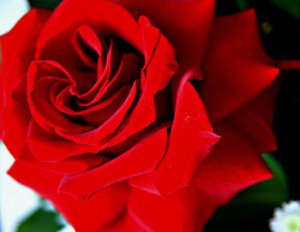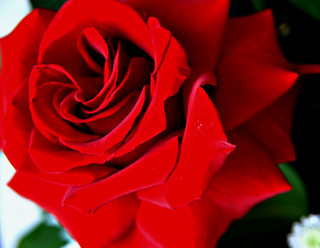With three children in my house I get asked a lot of questions. “Whys?” “What ifs?” “How comes?” are all part of the household daily dialogue. Apparently, the average three year old asks at least 50 questions a day, although I reckon our resident three year old easily doubles this number! I have noticed, of all the many questions my youngest asks, the most frequent one is….
……………………”MAMMY, WHAT’S YOUR FAVOURITE COLOUR?”
Your favourite colour seems to be one of the most defining aspect of your character when you are three years old! Apart from your food preferences, I think it is the first main expression of personal preference. The answer to this question can change at any given moment, but my three year old has been consistent with his favourite colour of yellow and I have to admit it really fits with his personality – but why do different things appear different colours? I thought this week I could share a bit about the science of colour!
Light is a type of energy called electromagnetic (EM) energy. EM energy actually travels in waves, even though we see light as straight lines. Light is the only type of EM energy that humans can see. The wavelength of light determines it’s colour. Light with the longest wavelength is red. Light with the shortest wavelength is violet.
SO HOW DOES LIGHT RELATE TO COLOUR?
When we look at a red flower, what are we really seeing? When light shines on an object, some of that light gets bounced back (reflected) off the object. The rest of the light gets absorbed by the object. We see the object as the colour that it reflects. So, when we are looking at a red flower we are looking at a flower that has absorbed all the light that is shining on it EXCEPT red light. It is reflecting red light so that is the colour it appears to the human eye. When an object appears white it is reflecting all the light shining on it and when an object appears black it is absorbing all the light and not reflecting any of it.

Scientist and artists sometimes look at colour in two very different ways; a scientist, observing light, will say that when you combine all the colours you end up with white (as discussed above). An artist may see it all very differently, when we mix paints, for example, if we mix all the colours together we will end up with black!MIXING COLOURS
 |
| Image credit: www.gelighting.com |
AN EXPERIMENT TO TRY:
You can try this yourself at home: use torches to create the coloured light…fix two different coloured pieces of cellophane (say red and green) over the end of two torches (one colour on each torch). Shine the torches on a white wall or piece of paper. When you overlap the red and green colours you should get yellow! Now repeat with paint – mix red and green paint and what do you get? Not yellow this time but brown!
HOW ARE RAINBOWS MADE?
When light travels through water it slows down and the light bends. Different wavelengths of light bend to different degrees so the light gets split up into its component colours. This is how rainbows are made…
when sunlight travels through drops of rain each colour of light bends to a different angle and the white light is separated out into it’s seven colours.
 |
| Photo credit: Eric Rolph |
Did you ever notice that usually when you see a rainbow there is a second, more faint rainbow around the first one? This second rainbow forms because some of the light is reflected off the back of the raindrop and bent a second time! These secondary rainbows appear more dark as the light has been bent twice and the colours appear in reverse. Check it out next time you see a rainbow!
HOW DO ANIMALS SEE COLOUR?
 |
| Image credit www.valencia-property.com |
Further Reading:
About Rainbows
Colour vision: One of nature’s wonders
Colour vision
Reptile vision.
